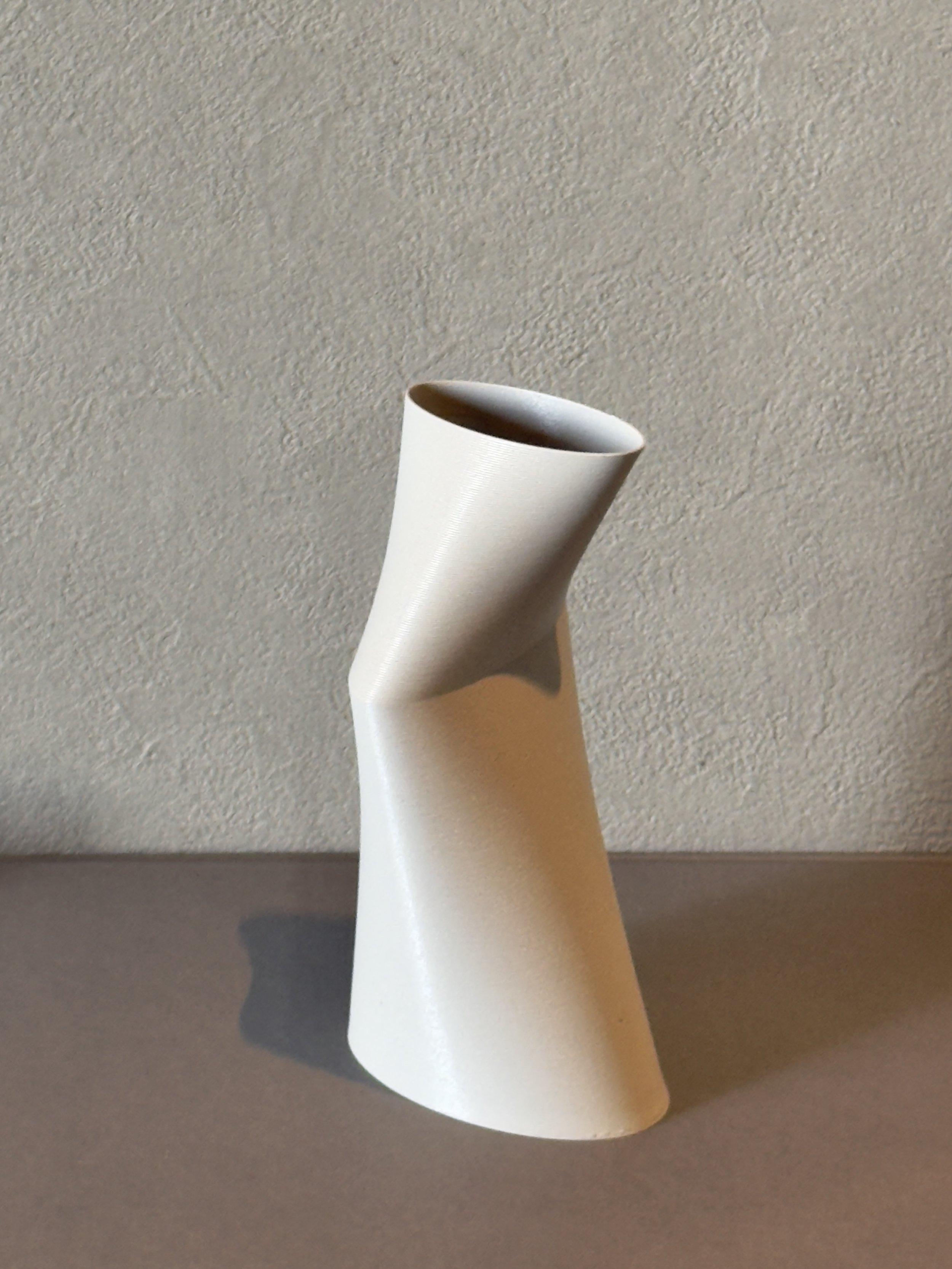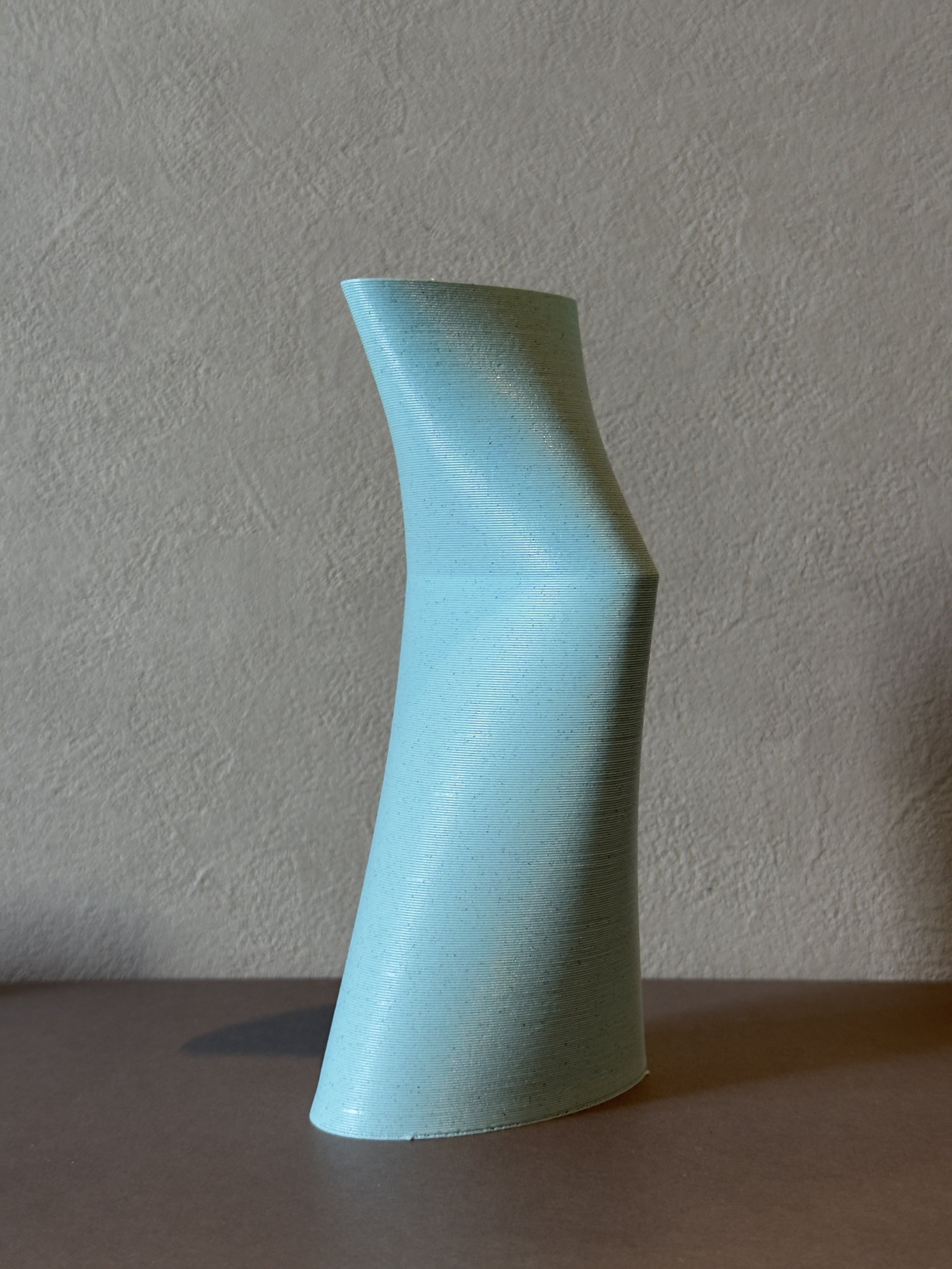 Image 1 of 4
Image 1 of 4

 Image 2 of 4
Image 2 of 4

 Image 3 of 4
Image 3 of 4

 Image 4 of 4
Image 4 of 4





M VASE #4
The vase
The exploration of geometric shapes and folding techniques in vase design transcends traditional forms. By using basic geometric principles, designers create innovative shapes that evoke movement and fluidity. A series of oval and quadrilateral planes manipulated by folds creates a dynamic exterior that invites interaction, casting intriguing shadows. The vase transforms when viewed from different angles, offering depth and dimensionality. Folding techniques enhance aesthetics and provide stability, ensuring balance and resilience. Designers can use various materials like ceramics, glass, or metal to enhance the tactile experience, as each material interacts with light differently. The integration of geometric shapes and folding results in vases that are both sculptural and functional, inspiring new designs that celebrate form and function.
The vase
The exploration of geometric shapes and folding techniques in vase design transcends traditional forms. By using basic geometric principles, designers create innovative shapes that evoke movement and fluidity. A series of oval and quadrilateral planes manipulated by folds creates a dynamic exterior that invites interaction, casting intriguing shadows. The vase transforms when viewed from different angles, offering depth and dimensionality. Folding techniques enhance aesthetics and provide stability, ensuring balance and resilience. Designers can use various materials like ceramics, glass, or metal to enhance the tactile experience, as each material interacts with light differently. The integration of geometric shapes and folding results in vases that are both sculptural and functional, inspiring new designs that celebrate form and function.

